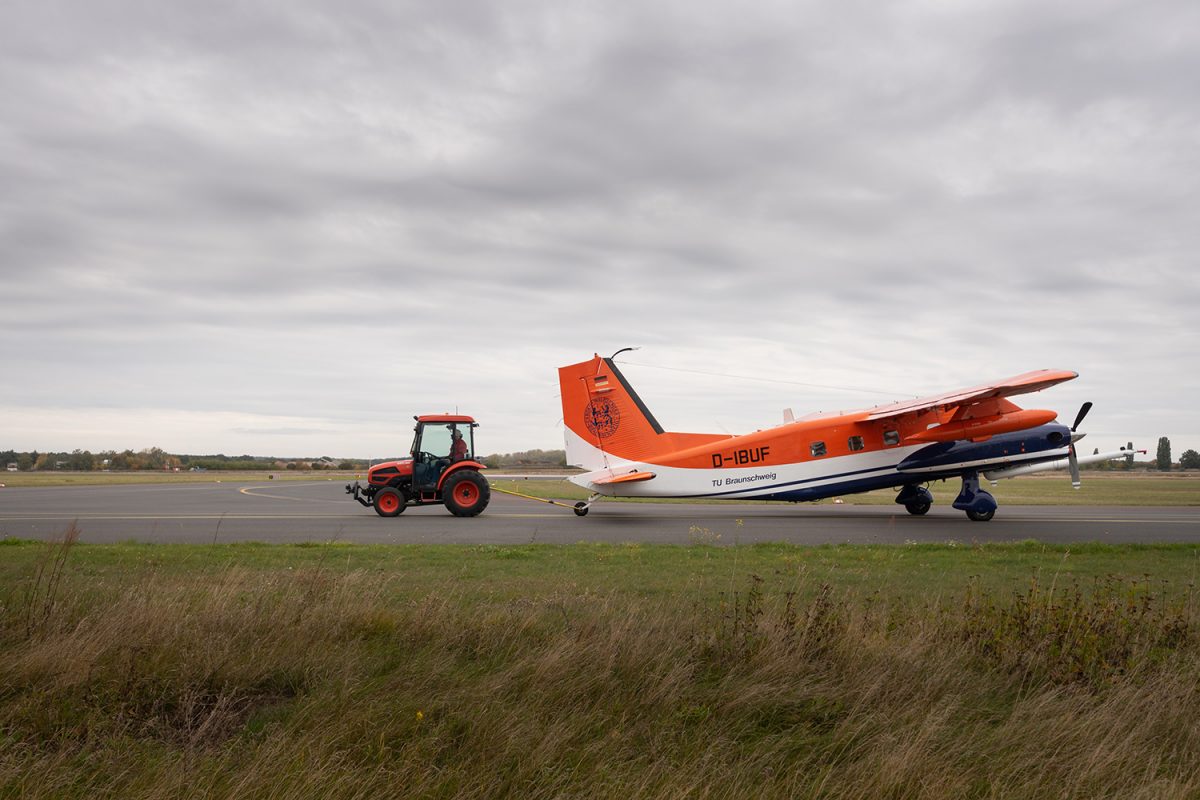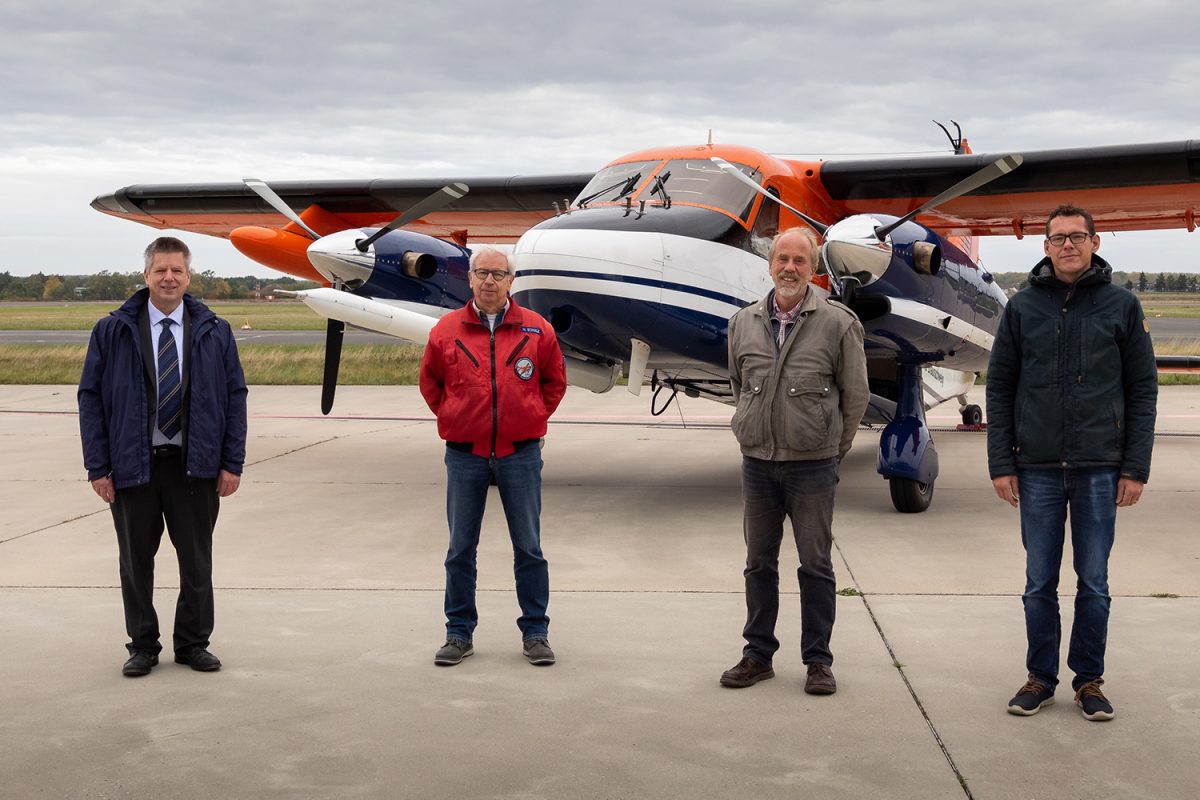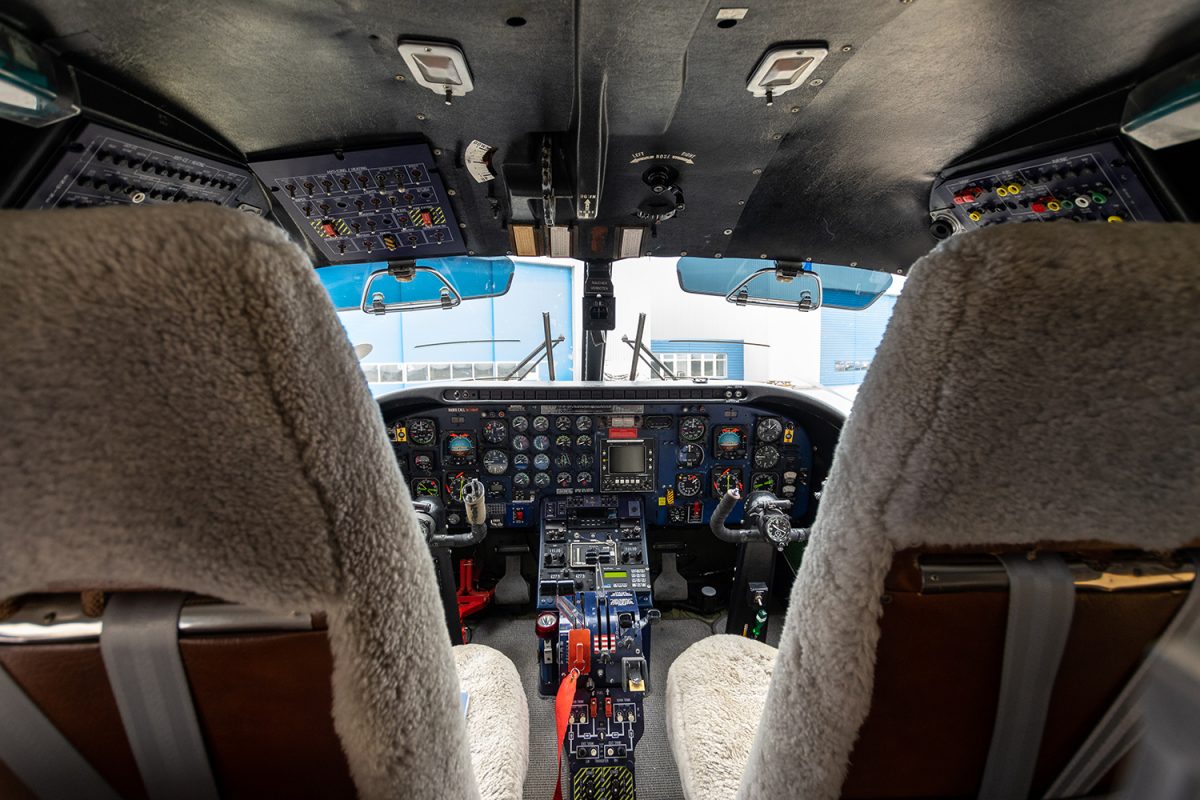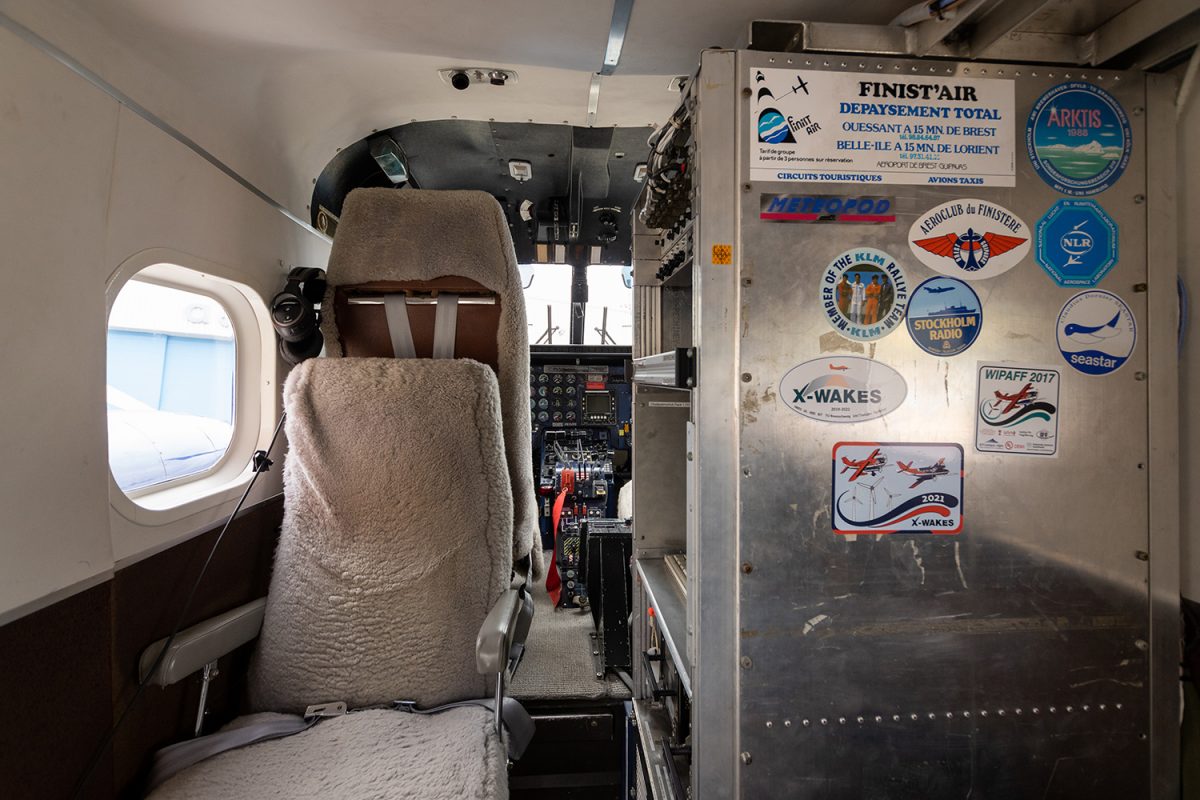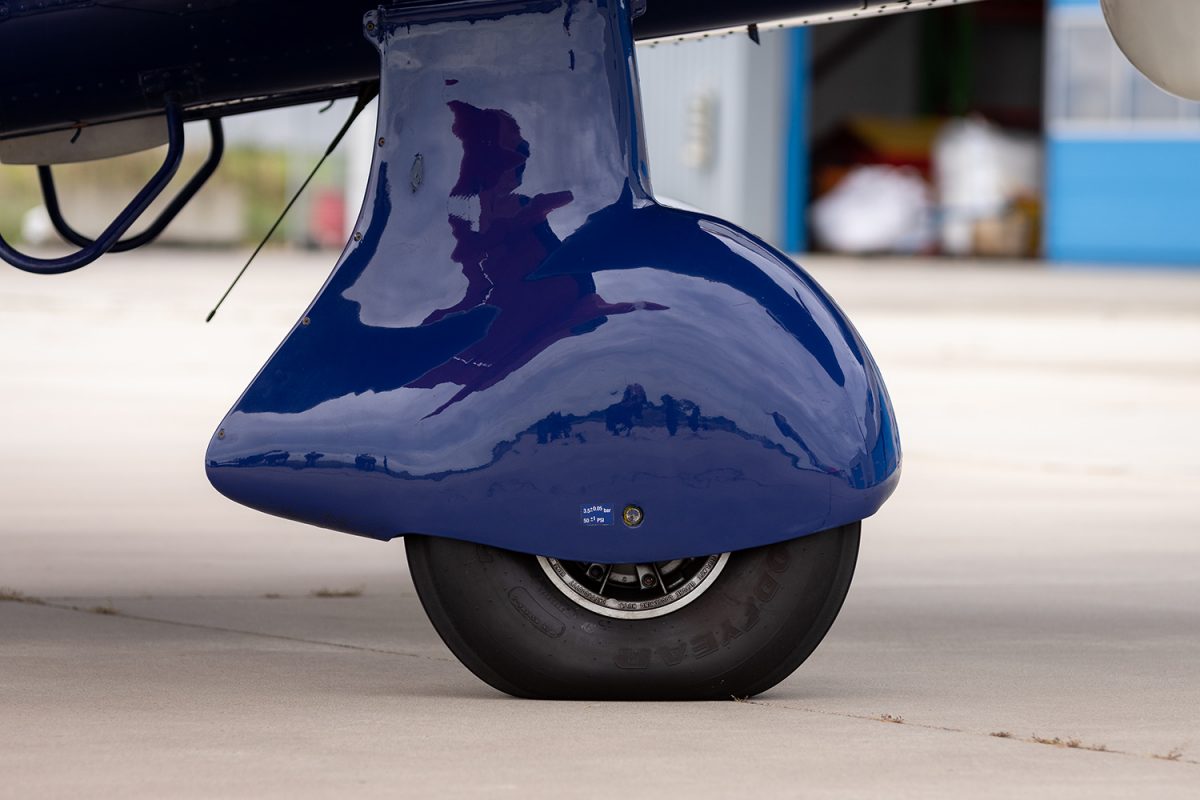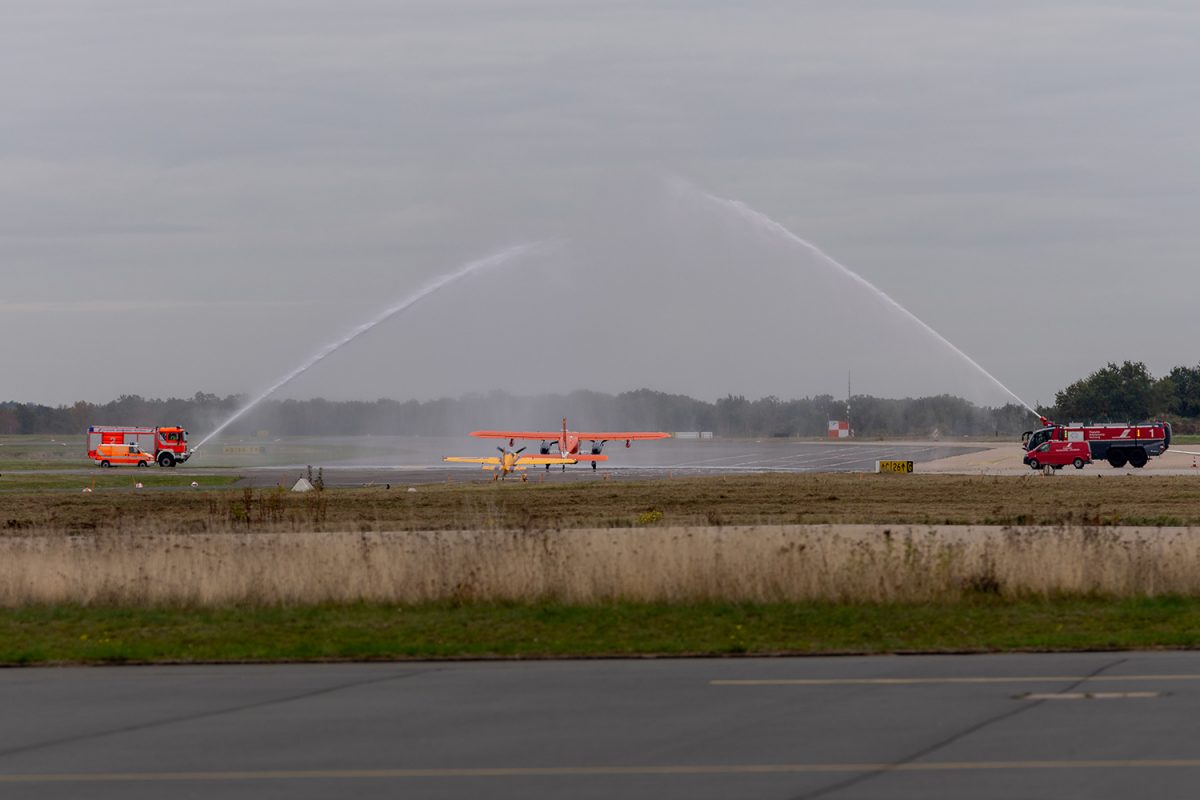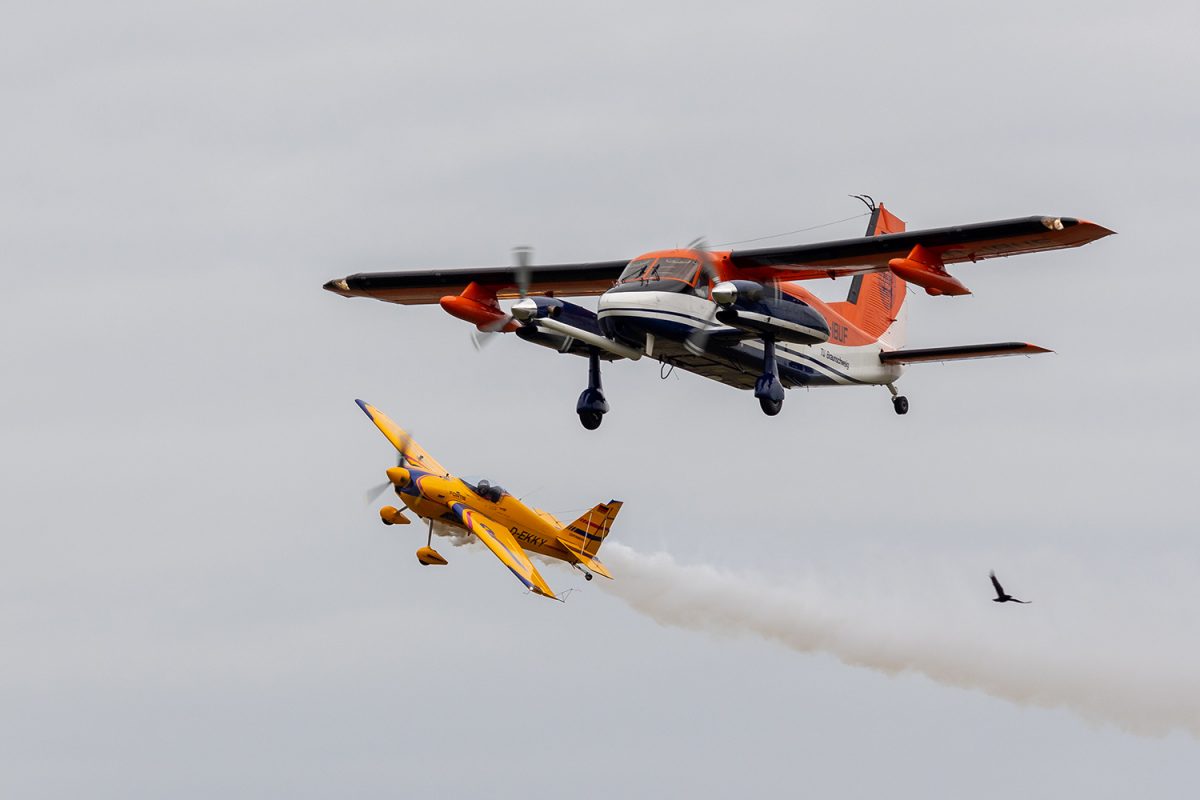Last Act of a High-tech Aircraft After 35 years, the TU research aircraft D-IBUF ends its mission
The aged D-IBUF was still in use for research shortly before it was decommissioned: It completed its last measurement flights on wind turbines over the North Sea for the “X-Wakes” project – with state-of-the-art measurement technology on board. While the successor aircraft (D-ILAB) also flies measurement campaigns, Technische Universität Braunschweig now said goodbye to the D-IBUF on 17 October 2021: Pilot Rudolf Hankers transferred the old research aircraft to Munich for retirement.
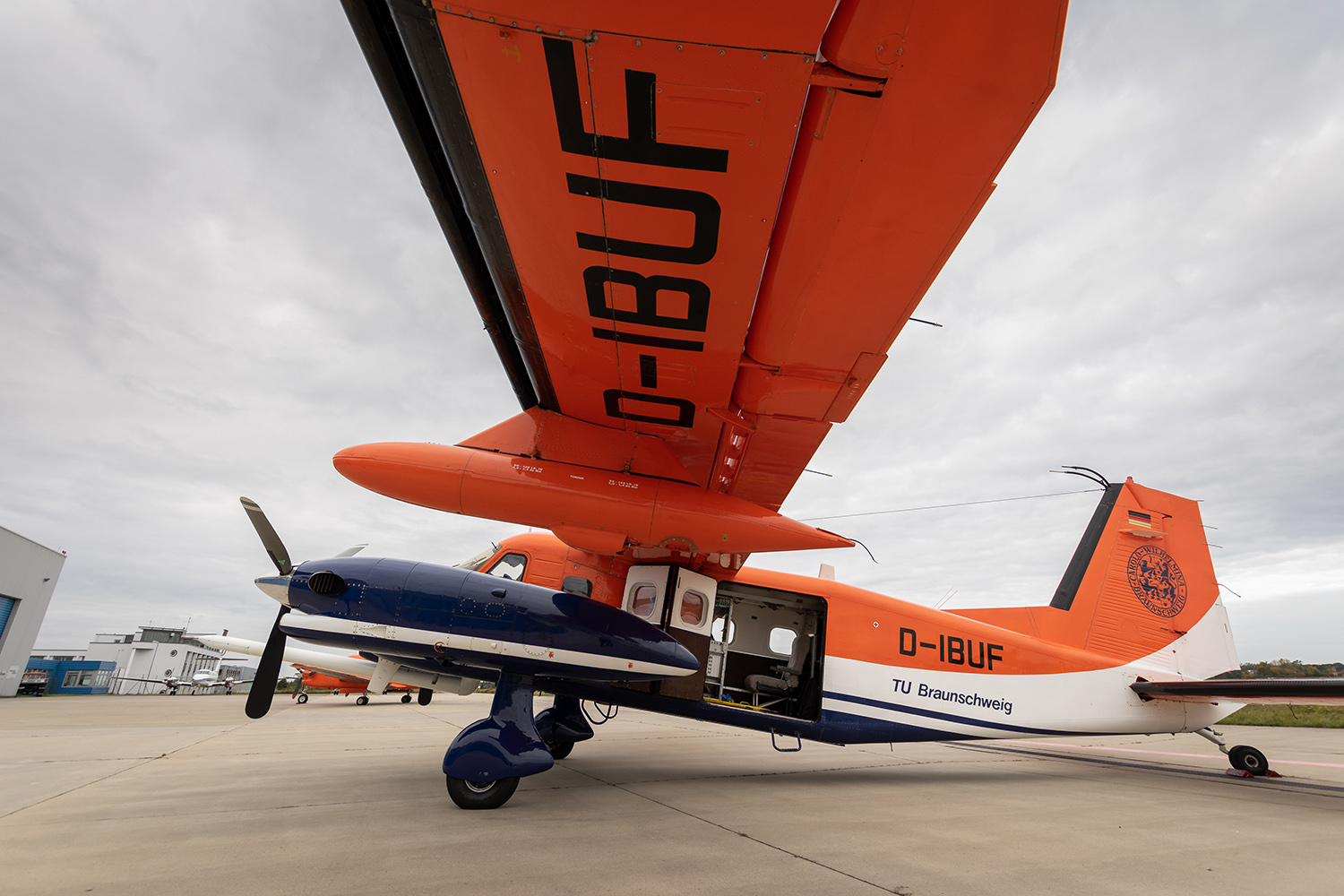
Ready for its last great journey: The TU research aircraft marked D-IBUF shortly before takeoff to its new home: the Deutsches Museum in Munich. Photo credit: Markus Hörster/TU Braunschweig
Mr. Hankers, what will happen to the old research aircraft now?
After 35 very successful years in measuring flight, the good IBUF is now exhibited in the Deutsches Museum in Munich, in the branch office in Oberschleißheim, and thus made accessible to the public.
Is it retiring gracefully?
Yes – definitely. Other old planes are cannibalized or scrapped. But that is unacceptable for an aircraft with such an extensive history in aviation research. And in the German Museum, the D-IBUF is actually in good company with other outstanding research aircraft.
By the way, this is not the first time that a TU research aircraft can be seen in a museum.
Yes, the predecessor of the IBUF at the Institute of Flight Guidance, the D-IBSW (Do-28), which was in service with us from 1980 to 1993, can be seen at the Luftfahrtmuseum Wernigerode.
The machine has made history. Can you briefly summarise what the machine has achieved on behalf of science (specifically the TU Braunschweig)?
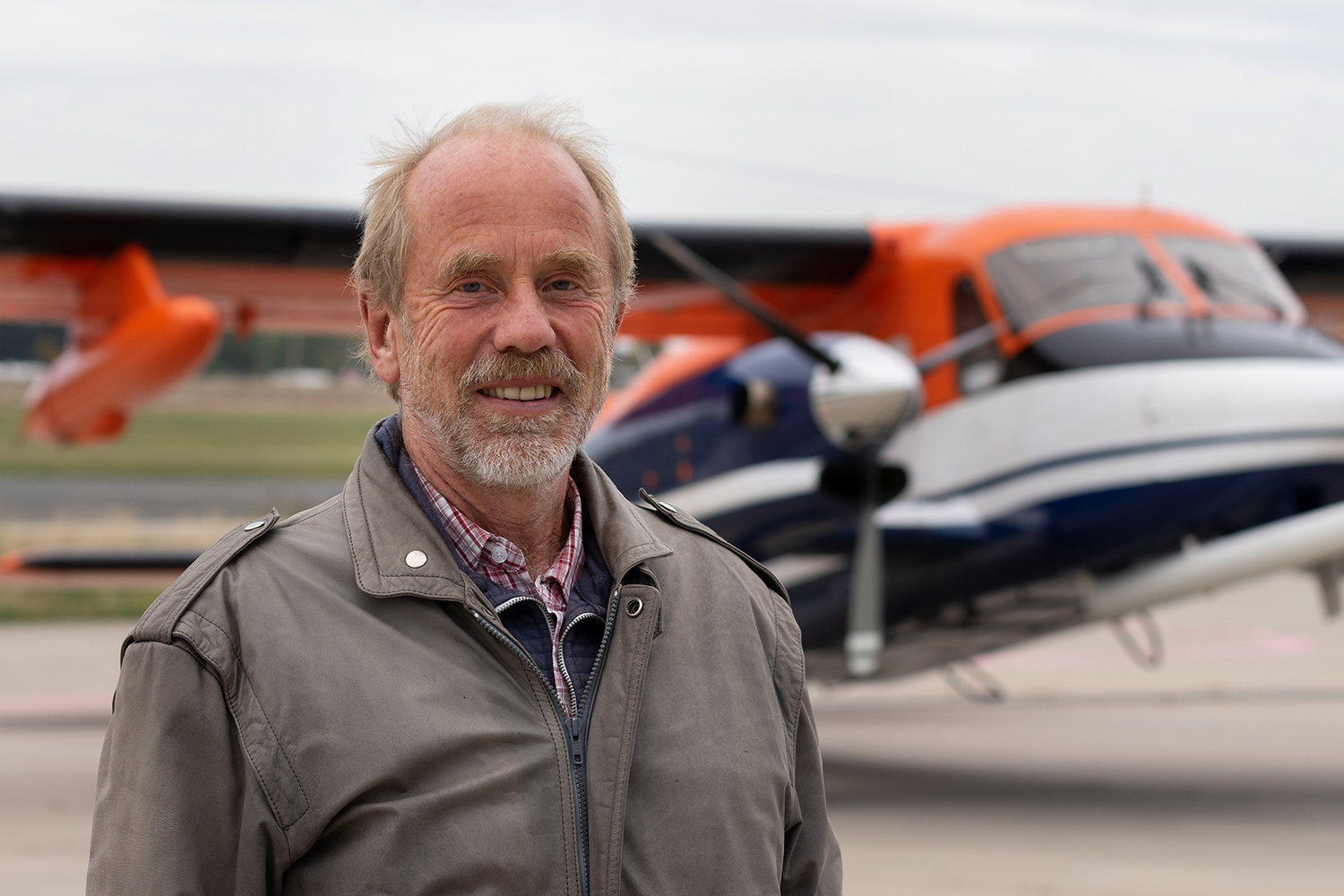
IBUF pilot Rudolf Hankers. Photo credit: Markus Hörster/TU Braunschweig
Geez – that’s hard to summarize 35 years of research flight operations in a nutshell. I’ll give it a try: In more than 5,000 flights and almost 5,000 flight hours, a wide variety of tasks were accomplished – starting with the countless practical flights with more than 3,000 students; about 50 meteorological measurement campaigns throughout Europe and almost to the North Pole; then, for example, air pollution measurements over Berlin, where almost half a ton of measurement technology was on board; and, of course, the very large number of test flights for the tasks of our institute – i.e. testing new instrumentation and navigation procedures.
What were the special technical features of the Dornier Do-128-6?
I had already mentioned the Do-28. The Dornier 128-6 is a – from the airframe – very similar aircraft, but now equipped with so-called propeller turbine engines. These engines are much more reliable than the old piston engines – and – what is important for our kind of flight tests (often very low, many approaches to airports) – extremely quiet. While the old Do-28 was one of the noisiest propeller planes, the D-IBUF is a real “whisper plane”. Due to the more powerful engines, the scientific payload could also be increased significantly, and the much more powerful power generators could also supply electrical power-hungry measurement equipment well.
What do you remember most fondly during your time with D-IBUF?
The most spectacular flights were of course meteorological measurement flights, such as flights over the Arctic Ocean from Spitzbergen, measurements of thunderstorm formation over the Black Forest, great measurement flights over Corsica, or more recently extreme low-level flights over the North Sea close to wind farms. But also the testing of navigation procedures resulted in exciting situations – long flights at night over Munich and Frankfurt, where the airports then “belonged” only to us. I also fondly remember approaches with “artificial visibility” in the Alps between the mountains near Lugano or Sion.
You have flown the DIBUF since 1986, i.e. from the beginning of the flight tests at the Institute of Flight Guidance. Does the end of the Dornier also concern you a little?
Well, it’s probably rare in this day and age that you devote almost your entire working life to one piece of equipment. But – and this is not a devaluation – the D-IBUF was only the “carrier” for the ever-changing test equipment and ever new, diverse flight tasks – and these were then also the challenges that had made the 35 years always very exciting. Yes – after such a long time without accidents it is not easy to say goodbye.

